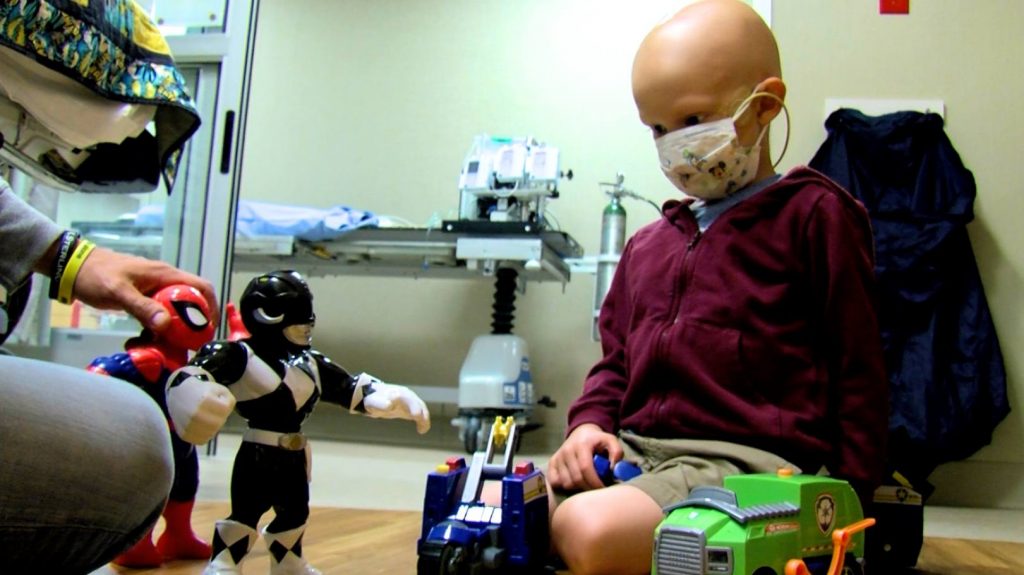
Proton beam therapy benefits patients with tumors located next to critical organs with potentially fewer severe side effects and complications, compared to other forms of radiation therapy. This is especially important for children with cancer ― children like 3-year-old Rhett Flaten who in May became the 5,000th patient to receive the cutting-edge treatment since the Rochester Proton Beam Therapy Program began six years ago.
Watch: With a little help from his "friends", 3-year-old takes on rare cancer.
Journalists: Broadcast-quality video (2:26) is in the downloads at the end of this post. Please courtesy: "Mayo Clinic News Network." Read the script.
Rhett Flaten loves superheroes. Playing with superheroes and other toys is part of Rhett's morning routine at Mayo Clinic, where he's receiving targeted proton beam radiation treatment.
"He usually looks forward to it, like this morning. 'I'm ready to go see my doctor friends.' That's what he calls everybody here," says Rhett's mother, Katie Flaten.
In February, Rhett was diagnosed with Ewing sarcoma, a rare type of cancer that occurs in the bones or soft tissue around bones. Rhett's tumor is located near his spine, and surgery is not a good option.
"Through our research, we really came to understand the benefits of proton beam radiation," says Kyle Flaten, Rhett's father.
"Rhett came to us from Wisconsin, and he came specifically for proton therapy. Given his young age, given the location of the tumor, proton therapy made the most sense for Rhett's treatment," says Dr. Safia Ahmed, a Mayo Clinic radiation oncologist.
"The benefit of proton therapy for Rhett is that we're able to treat the tumor completely with the dose needed to control this, while minimizing the radiation dose to the spinal cord, and minimizing the radiation dose to the esophagus, the lungs and the heart ― and all the other soft tissues around it. This dose reduction to normal tissues is really important for someone of Rhett's age."
"As a parent, I personally feel extremely fortunate to be as close to Rochester as we are," says Katie. "I think anyone in this situation just wants to do what's best for their child. And we feel confident that coming here and getting this therapy was in Rhett's best interest."
Rhett's prognosis is good overall. So far, he's responding well to treatment.
"To see Rhett go through the chemo and radiation, it's one of the most inspiring things I've ever witnessed," says Kyle. "For him to be able to just live in the present every day and face some extremely scary things, he's just extremely brave and optimistic."
After completing radiation therapy, Rhett will continue to receive several more months of chemotherapy and will enter the surveillance stage.
The Rochester Proton Beam Therapy Program began treating patients in June 2015. With facilities at Mayo Clinic in Arizona and Mayo Clinic in Rochester, Mayo Clinic has the largest proton beam therapy program in the world, treating over 2,000 patients each year.
____________________________________________
For the safety of its patients, staff and visitors, Mayo Clinic has strict masking policies in place. Anyone shown without a mask was either recorded prior to COVID-19 or recorded in a nonpatient care area where social distancing and other safety protocols were followed.







